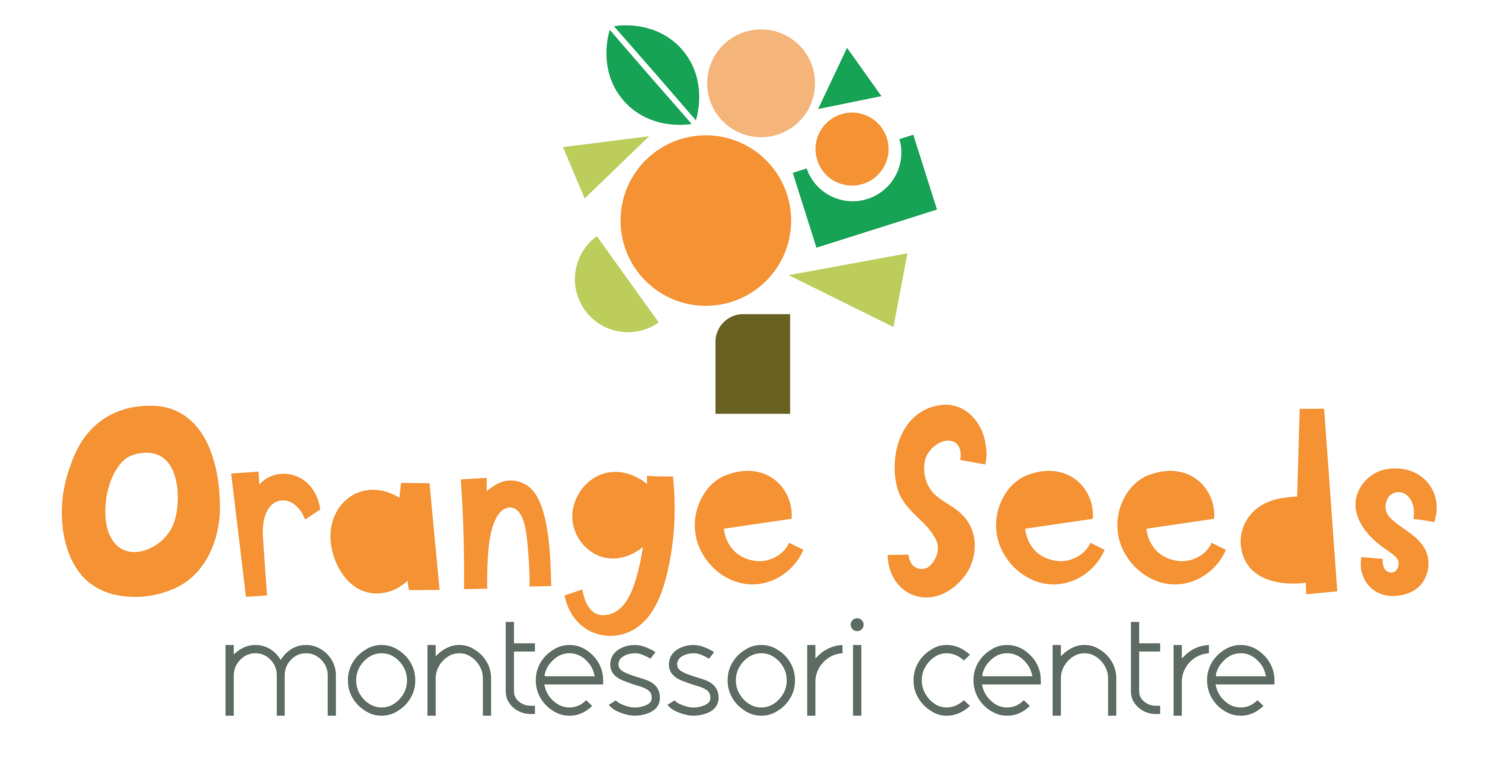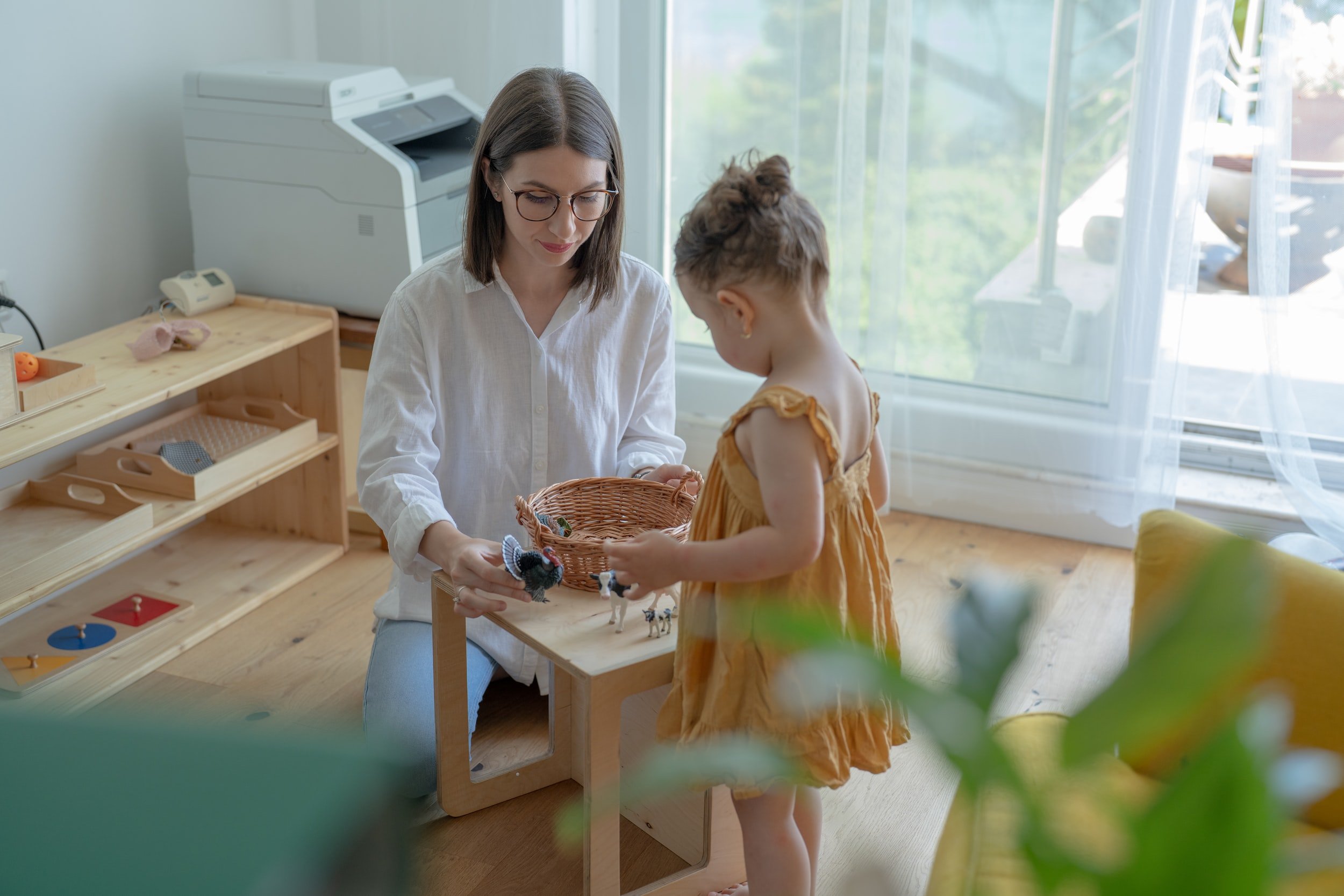Top 10 ways to practice Montessori at home
Finding a Montessori school or daycare for your children is one of the best ways to help your child develop. But you can also easily apply Montessori principles and the Montessori approach at home. If you're a Montessori parent, you can help your children learn practical life skills and supplement your child's education in the Montessori classroom at home.
What is the Montessori Method?
The Montessori approach to learning is based on the belief that children have an innate curiosity and should be encouraged to explore and discover their interests. It teaches children respect, cooperation, concentration, independence, problem-solving, and self-discipline.
The Montessori Method is a child-led approach developed by the Italian physician and educator Maria Montessori in 1907. It’s a unique approach to a child's education that recognizes its students as individuals with unique learning needs, interests, and capabilities. Maria Montessori believed Montessori schools should provide children with a prepared environment to explore their interests, receive guidance from adults, develop problem-solving and practical life skills, and practice self-discipline.
Montessori at Home
There are many ways to recreate Montessori at home. Here are the top ten most popular ways to recreate a Montessori education at home. Each method has its benefits, and you can choose the ones that best suit your needs and your child’s personality.
Introduce tools that teach practical life skills
1. Set up a Montessori learning environment.
Setting up a Montessori learning environment at home to accommodate your child is essential in using Montessori at home. Using child-sized furniture and tools creates opportunities for school-aged children to work independently.
This way, younger children can learn to master skills independently without a parent stepping in to help. Each room in the house, especially your child's room, can be adapted with low furniture or easily accessible step stools. A table and chair set will provide a place where children can work on activities or food preparation.
Low shelves or a rolling trolley can display the child's current interests and art supplies to choose from and get on their own. A care station can be set up in a child's bedroom for children to wash their hands or comb their hair without assistance.
These are key to recreating a Montessori environment at home and will help promote independence and child-led learning.
Child-friendly tools are often found in a Montessori classroom and will help to stimulate a child's Montessori education at home too. Child-sized items to keep in your home include:
Utensils, cups, bowls, and plates
Child-sized pitcher
Scoops and tongs
Kitchen towels
Child-safe cutting tools
Broom and dustpan
Kid-safe Art supplies
Other food preparation tools
When setting up your children's bedrooms in your Montessori home, you can also select child-sized furniture and consider the following:
Floor bed
Child-sized desk
Natural materials
Hang interesting artwork
A few books
The Montessori method means giving your child a prepared environment with furniture and tools to practice real-life skills and more complex tasks in their own space.
Give your child a prepared environment with tools to practice real-life skills
2. Involve your children in household activities.
Allowing children to help around the house is another excellent way to implement Montessori principles at home. Tasks such as cooking, cleaning, or folding laundry are perfect activities to involve children.
You can begin to include children in household chores in age-appropriate ways even before they turn one. It’s important to supervise children during these activities but make sure not to interfere unless necessary.
The best tasks to introduce to children the home environment includes:
Picking up toys
Washing produce
Feeding pets
Watering plants
Wiping surfaces
Pouring and mixing ingredients
Pouring water or other drinks
Older children can also take on the responsibility of more difficult tasks.
Give children tasks and encourage them to take care of themselves
3. Follow a routine and stick to it as much as possible.
Routines play a big role in the Montessori method of education, as they should in recreating Montessori learning at home. One of the main goals of the Montessori philosophy is to help children become more independent. This is achieved by allowing them to learn and practice skills in a safe and controlled environment.
Routines help to create stability in a child’s life and help them to feel secure. When children know what to expect, they are happier and more relaxed. A routine will also help your child to develop a sense of orderliness and responsibility.
Creating a routine for your child at home can be as simple as following a regular bedtime or mealtimes. You can also create a schedule for specific activities, such as homework or playtime. Be sure to stick to the routine as much as possible, so your child knows what to expect.
4. Respect your child’s independence and personal space.
Respecting your child’s independence is another key component of Montessori education. This means allowing your child freedom to choose, explore their environment, and interact with others on their terms.
It can be difficult for some parents to let go, but it’s important to remember that these are essential steps in helping your child become an independent adult. Respecting personal space is also important in helping your child feel comfortable in their surroundings.
While it is common for parents to use encouraging words while their children play, it is important to learn to sit back and observe without interrupting. This allows your child to fully concentrate on the task they’re working on and gives them time to develop the skills needed to complete the task.
Offer activities that your child can do on their own and get into the habit of watching quietly. This is also a great way to allow children to correct mistakes independently. You will also be able to see what activities your child gravitates towards, and you can continue to offer them toys and activities that interest them.
Observing your child will also allow you to see where your child is developmentally and therefore be able to offer them age-appropriate activities. Take notice of any too-easy or difficult activity, as these signs are developmentally inappropriate. You can store away toys that are too difficult and reintroduce them later. For toys or tasks that are too easy, you can find ways to make them more challenging and interesting for your child.
Do not hover over your child or constantly interfere with their activities. Give them space to try new things and make mistakes. Offer guidance when necessary but allow them to find their own way in the world.
Give your child their own space and respect their independence
5. Provide positive reinforcement for every accomplishment.
One of the key aspects of the Montessori approach is providing positive reinforcement for every accomplishment, no matter how small it may seem. This helps children to feel confident and motivated to continue learning and trying new things.
Parents who are using the Montessori philosophy at home can provide positive reinforcement in a variety of ways. One way is by praising your child’s efforts, not just their accomplishments. For example, you can say, “I like the way you tried hard on that math problem,” or “I appreciate how neatly you cleaned your room.” This praise shows that you value effort over results and helps build a strong foundation for future success.
You can also provide physical rewards such as hugs, kisses, or high-fives. These tangible expressions of love help children feel good about themselves and encourage them to keep trying their best. And finally, parents can verbally acknowledge their child’s accomplishments with phrases such as “Good job!” or “Well done!” These short but sweet phrases let your child know you are proud of them and motivate them to do even better next time.
Organization is key to the Montessori Method
6. Keep your home environment organized.
A key part of the Montessori philosophy is keeping a well-organized and aesthetically pleasing home environment. This means that all of your child’s toys, books, furniture, and supplies should be stored in an orderly fashion.
Organizing your home can help create a calm atmosphere in which children are more likely to stay focused and engaged in their activities. Keeping things neat also helps children learn how to self-regulate their behaviour by understanding the importance of orderliness.
When organizing your home for Montessori purposes, remember to keep it simple. Selecting clear-cut organizational systems such as labelled bins or baskets makes it easier for children to find what they need without getting overwhelmed by clutter. Additionally, be sure to stay consistent with your organizational choices for it to become second nature for you and your child.
By following the Montessori approach and implementing these tips, you can create a peaceful and nurturing home environment that supports your child’s learning and development. By doing so, you will be equipping your child with the tools they need to thrive in this world. So go ahead: get organized, observe closely, provide positive reinforcement, and start enjoying the benefits of Montessori at home!
7. Provide meaningful Montessori learning materials.
The last tip to help you successfully use the Montessori Method with your children is to provide meaningful learning materials. Montessori-style learning materials are thoughtfully designed to engage and stimulate children in different ways and can teach a range of skills from basic literacy and math to complex problem-solving.
Some examples of traditional Montessori activities include sorting, counting, pouring, threading beads, and many more. In addition to these classic activities, there is an ever-growing selection of modern Montessori materials available at stores and online that focus on STEAM topics such as coding and robotics.
No matter which Montessori activities you choose for your child, ensure they are age-appropriate to get the most out of them.
The Montessori method has been used successfully for over a century and is a proven way to help your child learn and grow. By following these tips, you can create a Montessori-inspired home environment where your children can thrive. So go ahead: get organized, observe closely, provide positive reinforcement, give meaningful Montessori materials, and enjoy the benefits of Montessori at home!
Labelling helps keep things tidy and develops your child’s vocabulary
8. Label items around your home.
Labelling items around your home is an easy way to integrate the Montessori method into your daily life. Labels make it easier for children to identify and remember objects, build vocabulary, and develop independence.
It’s best to start with commonly used items like furniture, toys, and kitchen supplies. You can make labels that indicate what each item is used for or simply list its name in plain text. Keep them simple so that even young children can understand them.
You can also use this opportunity to introduce new words and concepts by labelling more complicated items, such as art supplies or musical instruments. This encourages kids to use their curiosity and explore their environment in a safe and controlled way.
9. Put away distractions such as TVs, iPads and smartphones.
Recreating the Montessori method at home can be challenging when you're constantly being pulled in different directions.
One of the most important things to remember when creating a Montessori-inspired environment is to put away distractions such as TVs, iPads, and smartphones. These gadgets can be incredibly tempting for children and easily pull them away from their activities.
Creating an environment free from distractions allows children to focus on their tasks and provides a more peaceful atmosphere where they can learn and grow. It may take some effort to resist using these devices, but it's well worth it in the long run.
You are creating an environment conducive to learning and growth by putting away distractions.
Children need time and space to explore their world without being inundated by electronic gadgets or noises. This uninterrupted exploration is crucial for their development and helps lay the foundation for a lifetime of learning. It may not be easy in this day and age to unplug completely, but making a conscious effort to do so will help your child thrive both academically and emotionally.
Play-based learning encourages exploration and experimentation
10. Encourage play-based learning.
Play-based learning is a core component of the Montessori Method and encourages children to learn through exploration, experimentation, and discovery. It's an incredibly effective way for children to acquire knowledge while also having fun.
Encourage play-based learning activities such as pretend play, arts and crafts, building with blocks, reading stories or books together, or playing interactive games. These activities can help your child develop problem-solving skills, build connections between concepts, and strengthen their creativity and imagination.
Parents need to guide these activities so that children don’t get stuck or frustrated. Ask open-ended questions that encourage them to think critically about the task instead of simply giving them the answer.
By encouraging play-based learning, you’re providing your child with an opportunity to explore and learn in a safe and fun way. This helps foster independence and critical thinking skills, which will stay with them for life.
From the Montessori school to the home
The Montessori Method isn't just used in the classroom. It can also be used at home to create an environment where your children can reach their full potential.
By organizing your space, observing your child's interests and needs, introducing positive reinforcement, providing meaningful materials, labelling items around the home, eliminating distractions like TV or smartphones, and encouraging play-based learning activities – you will help create an ideal Montessori environment that encourages learning and growth. Give Montessori a try, and watch as your child blossoms!
If you're interested in learning more about how the Montessori Method can help your children learn practical skills and develop a lifelong love of learning, contact Oakville's premiere Montessori daycare, Orange Seeds Montessori Centre, today.









